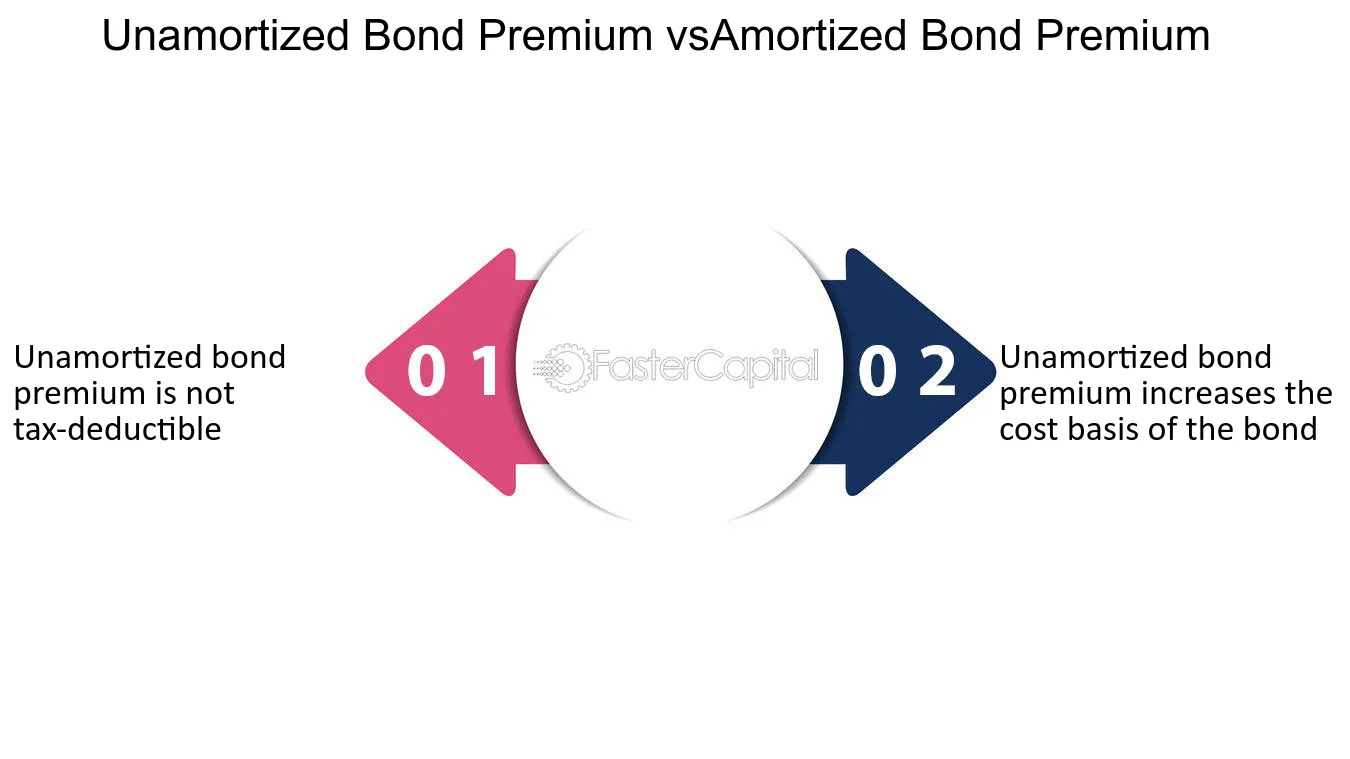What is Unamortized Bond Premium?
Unamortized bond premium refers to the portion of a bond’s purchase price that exceeds its face value. When an investor buys a bond at a price higher than its face value, the difference between the purchase price and the face value is considered the bond premium. This premium is not immediately expensed but is instead spread out over the life of the bond through a process called amortization.
Amortization is the gradual reduction of the bond premium over time. It is typically done using the effective interest rate method, where a portion of the premium is recognized as interest income each period. The remaining premium is then amortized, or gradually reduced, until it reaches zero by the bond’s maturity date.
Investors should be aware of the unamortized bond premium when considering the overall return on their bond investments. While the premium may provide higher interest income in the early years of the bond’s life, it will gradually decrease over time. This can impact the overall yield and return on investment for the bond.
Calculation of Unamortized Bond Premium
Calculating the unamortized bond premium involves several steps. Here is a step-by-step guide:
- Calculate the market price of the bond: The market price is the current price at which the bond is trading in the market.
- Calculate the bond premium: The bond premium is the difference between the face value and the market price of the bond.
- Determine the bond’s maturity date: The maturity date is the date on which the bond will be repaid in full.
- Calculate the bond’s term: The term is the number of years remaining until the bond’s maturity date.
- Calculate the annual amortization amount: The annual amortization amount is calculated by dividing the bond premium by the bond’s term.
- Calculate the unamortized bond premium: The unamortized bond premium is the difference between the bond premium and the total amortization amount that has been recorded to date.
By calculating the unamortized bond premium, investors and analysts can gain insights into the financial health of a company and make informed investment decisions. It allows them to assess the impact of the bond premium on the company’s profitability and cash flow.
Example of Unamortized Bond Premium

Let’s consider an example to understand how unamortized bond premium is calculated and its impact on financial statements.
Company XYZ
Company XYZ issued a 10-year bond with a face value of $1,000 and a coupon rate of 5%. The bond was issued at a premium, meaning it was sold for more than its face value. The premium amount was $100.
Here is the breakdown of the bond details:
- Face value: $1,000
- Coupon rate: 5%
- Premium amount: $100
Since the bond was issued at a premium, the company received $1,100 ($1,000 face value + $100 premium) from the bondholders.
Now, let’s calculate the unamortized bond premium for the first year:
- Calculate the annual coupon payment: $1,000 (face value) * 5% (coupon rate) = $50
- Calculate the amortization amount: $100 (premium amount) / 10 (number of years) = $10
At the end of the first year, the unamortized bond premium is $90. This means that $10 of the premium has been amortized, reducing the premium balance. The amortization amount is subtracted from the annual coupon payment to determine the actual interest expense recorded on the income statement.
Each year, the company will continue to amortize the bond premium until it reaches zero at the end of the bond’s maturity. The unamortized bond premium is reported as a separate line item on the balance sheet and is gradually reduced over time.

Emily Bibb simplifies finance through bestselling books and articles, bridging complex concepts for everyday understanding. Engaging audiences via social media, she shares insights for financial success. Active in seminars and philanthropy, Bibb aims to create a more financially informed society, driven by her passion for empowering others.
